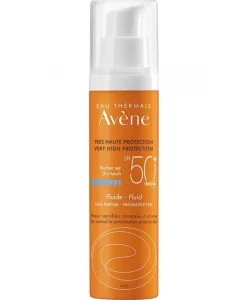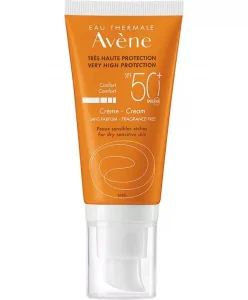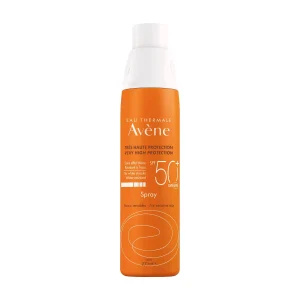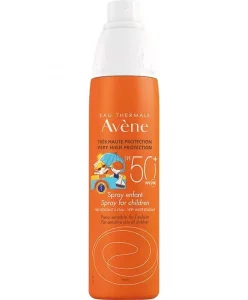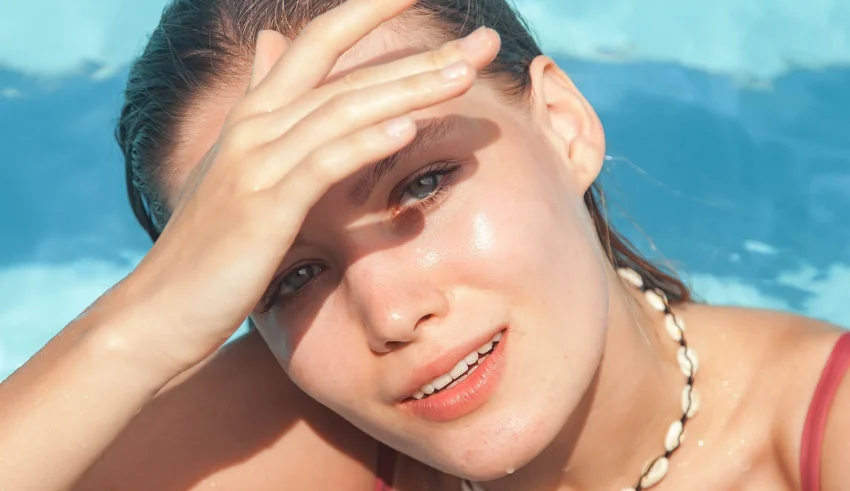
We all know the importance of wearing sunscreen. However, when you add water to the mix, it presents an additional challenge. If you swim, it is vital that you find a sun protection cream for swimming that can last when you spend a day at the pool or beach. But not all sunscreens are the same and effective, so you need to choose the best one to protect you and your family. There are many sunscreens on the market today, making it difficult for some to find the right one. To help you narrow down your choice, check out this article from The Dermo Lab in collaboration with the dermatologist Dr. Hager Sharaf, who will explain the factors to consider when choosing a swimming sunscreen.
Factors to consider when choosing a swimming sunscreen
1- Form
Sunscreen comes in many forms, from lotion to oil, gel, stick, cream, paste, and spray. If you are looking for sunscreen that you can apply easily and quickly, we recommend sprays. However, all products are excellent and it’s just a matter of personal preference.
2- Water resistance
Every sunscreen is labeled with its water resistance. This refers to how long the formula stops working in water, which is important to know if you’re going swimming. For example, most products have a water resistance label of 80 minutes. But others may only last 40 minutes.
3- SPF level
The SPF level measures a sunscreen’s ability to protect you from UVB rays, or the type of UV light that causes sunburn and skin cancer. The higher the number, the greater the protection. But the difference is small. To give you an idea, SPF 15 can block 93% of UVB rays, SPF 30 filters out 97%, and SPF 50 blocks 98%. But remember, no SPF can provide 100% protection. According to Dr. Hager Sharaf, SPF 50 is enough to block the most harmful rays at the beach. He adds that light-colored sand and water intensify the sun’s rays. So, consider using a higher SPF at the beach than for everyday use.
However, there is another type of UV radiation, called UVA. These rays are responsible for damaging your skin, including tanning, skin aging, and wrinkles. Since the SPF level only determines its effectiveness against UVB, we recommend checking the “Broad Spectrum” label, which means the product protects you from both UVA and UVB.
4- Type of sunscreen
You can choose between two types of sunscreen: mineral and chemical. While both types offer protection from the sun’s harmful rays, their manufacturing process is very different. This is due to their formulation and ingredients.
- Mineral sunscreen
In the case of mineral sunscreen, the active ingredients include only titanium dioxide and zinc oxide, which are considered safe and effective. This type of sunscreen works by blocking the sun’s rays.
- Chemical sunscreen
As for chemical sunscreen, its active ingredients may include oxybenzone, avobenzone, octisalate, homosalate, octocrylene, and octinoxate. This sunscreen works by absorbing UV light, converting it into heat, and allowing it to dissipate from the skin.
Keep reading if you want to know how to protect your skin from tanning.
What are the sun protection tips for swimming?
Below are several tips for protecting your skin from the sun while swimming.
- Invest in UPF clothing
Sunscreen can be effective, but it fades over time. The more you sweat and the more you jump in the pool, the more you wash off the sunscreen. So, hour after hour, your skin is exposed to the sun, without any form of protection. It is important to protect yourself from the sun before, during and after your swim.
That’s why you should consider investing in sun protective clothing. There are several options that you can choose from. For example, you can invest in a men’s or women’s top that will go well with almost any swimsuit.
There are also many other types of sun protection swimwear for adults. For women, you can look into UPF tops, bottoms and even dresses that offer style and protection for your sunny days. There is also sun protection swimwear for babies. All UPF clothing offers UPF 50+ sun protection.
- Swim in the morning and evening
There are certain times of the day when you should actively avoid the sun. Mid-day is when the sun is most dangerous, as this is when it reaches its highest peak. When the sun is at its peak, it emits the greatest amount of UV rays.
Instead, go swimming before or after mid-day. This will allow the sunscreen and UPF swimsuit you use to prevent more UVA and UVB rays from hitting your skin directly.
- Know when to apply and reapply sunscreen
In general, you should apply sunscreen at least 20 minutes before you get in the water and start swimming. Remember, even if it’s a cloudy day, you can still get burned. Make sure to apply sunscreen regardless of the weather conditions.
Not reapplying sunscreen is one of the biggest mistakes people make. Even the best swimming sunscreens can’t last all day. Once you have been swimming in the water for about 40-50 minutes, get out, dry off and reapply sunscreen.
Just because you can’t see the sun doesn’t mean it can’t harm your skin. In fact, when it’s cloudy, up to 80% of the sun’s UV rays can still penetrate your skin.
Check out the best sunscreens for swimming below.
For oily and acne-prone skin:
Eau Thermale Avène Very High Protection Fluid SPF 50+
For dry skin:
Eau Thermale Avène Very High Protection Cream SPF50+
For the body:
Eau Thermale Avène High Sun Protection Spray SPF 50+
For children’s sensitive skin:
Eau Thermale Avène Spray for Children SPF 50+
- Beware of chlorine
Sunscreens were not designed for chlorine. In fact, chlorine washes off the sunscreen, reducing the amount of time it protects you from the sun.
Always be aware of where you are going to swim. If you swim in an ocean, river or lake, your sunscreen will last longer. If you are swimming in a pool with chlorine, you should be preventive and reapply as often as possible.
Now that you’ve seen all the different tips and tricks you can use to protect yourself from the sun while swimming, it’s time to put them into practice.
FAQs on sun protection cream for swimming
Are sunscreens waterproof?
Sunscreens are only waterproof if it says so on the bottle. If you’re looking for sunscreen products that protect you while swimming, you need to find those that say they are “water resistant” or “waterproof”.
How long does waterproof sunscreen last?
It depends on the sunscreen, but in general, a waterproof sunscreen lasts between 40 and 80 minutes in water. Check the label on your waterproof sunscreen to see how often you should reapply.
Is zinc oxide enough for sun protection?
Dr. Hager Sharaf says that zinc oxide is the safest and most effective active ingredient in sunscreens. It also stands out for its true effectiveness and broad-spectrum blocking, which means it protects against UVA, UVB and even UVC rays
What is the best umbrella color for sun protection?
Dr. Hager Sharaf states that black is the best umbrella color.
Black umbrellas can cool you down and protect you from harsh UV rays better than any other color. The thicker the fabric, the better it blocks UV rays. Black objects absorb more of the sun’s heat than white ones because they absorb more light energy.
Last Updated on February 16, 2024

